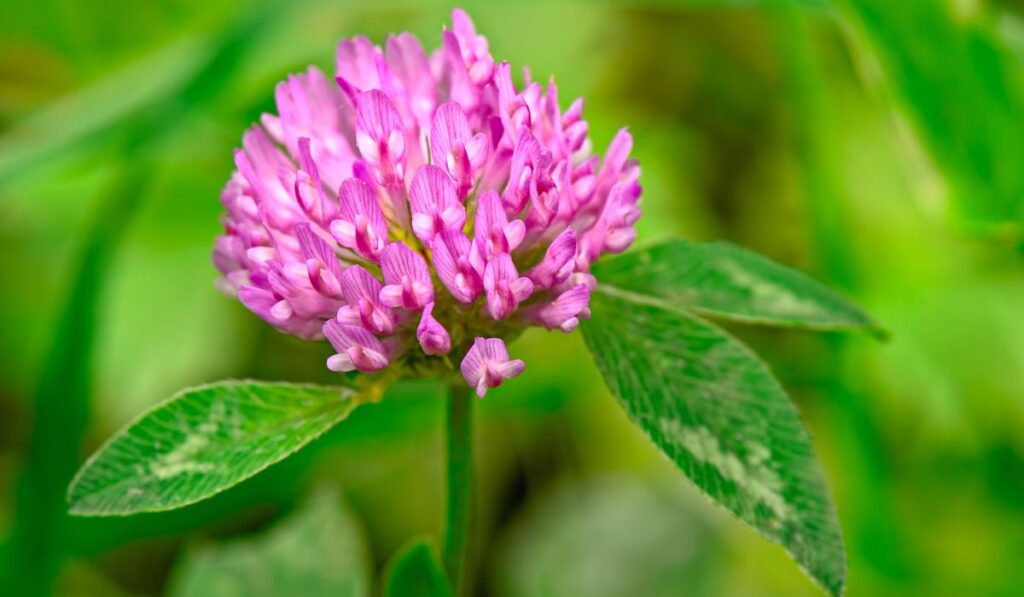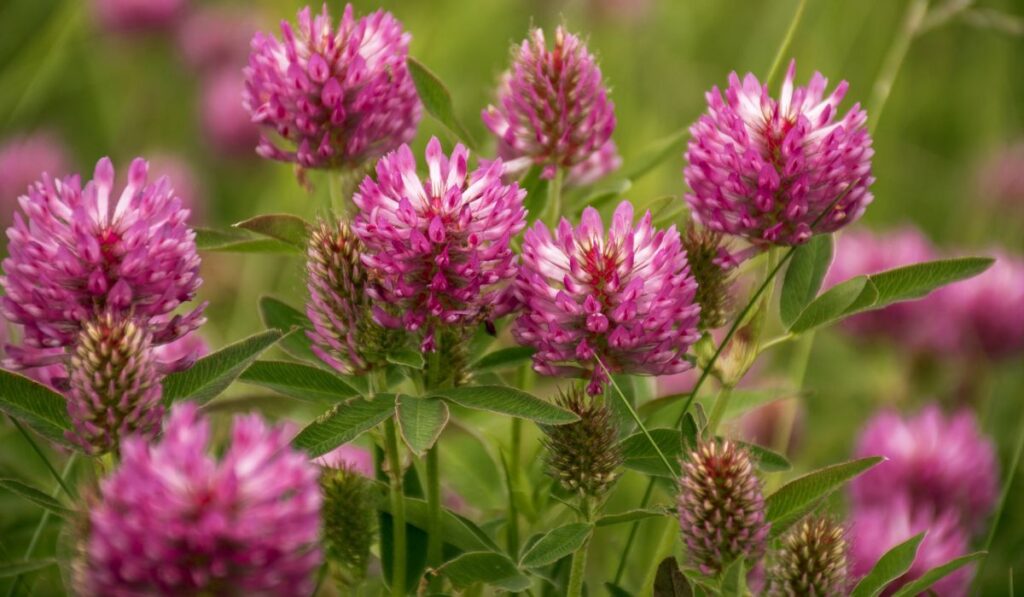The Clover plant benefits the environment and other plants near it. It is easier to grow clover than grass. However, many people are confused as to when to plant clover seeds. If you want to know when and how to plant clover seeds, you are in the right place.
The best time to plant clover is during spring-early summer or late summer-early fall. It grows best in moist soil with a pH of 6-6.5. Grow clover when temperatures are warm enough, >40 F. You can grow clover efficiently in March-September, but expect growing to slow during intense heat.
Clover requires specific pH and soil conditions. Moreover, there are different clover types that you must know about before choosing a type. So, let’s get started!
When is the Best Time to Plant Clover?

Clover (on Amazon) is a fantastic plant often associated with luck. It benefits the vegetation around it as its nitrogen is used when it dies. It takes nitrogen from the air and doesn’t require any nitrogen fertilizers for growth.
Another good thing about clover is that you can plant it anywhere from 15th March to 15th September. That gives you plenty of time to plant clover. Clover requires a lot of water. Therefore, it is best to plant it when you know that rain is due. You can also plant it right after spring rains when the soil is soggy wet.
At least 6 hours of sunlight is vital for the clover’s fast and efficient growth. Therefore, it is better to plant clover after spring when the night temperature is warmer than 40 F. It won’t take longer than two weeks to grow in such conditions.
There are different types of clovers that have different optimum temperatures. Some require warm temperatures as high as 45 degrees celsius, while some can grow well in winter too. It depends on the clover you use and the area you live in.
Growing Clover in Winter
You can grow clover in winters too in the south as there is rarely any snow and freezing temperatures.
One advantage of growing clover in winter is that clover insect pests are non-existent at this time. In addition, clover seedlings get better soil exposure at this time and don’t have much competition with other seedlings.
In areas where heavy freezing, snow, and freezing temperature is expected, plant clover at least six weeks before such weather. Even though it can grow well in temperatures as low as 34 degrees celsius, warm temperatures allow clover to grow faster with full potential.
Different Types of Clover
There are different types of clover. All these types require different conditions to thrive in your garden. Choosing the right clover is essential if you want it to bloom perfectly.
The type depends upon the area you live in, and the time of the year you are planting clover. Clovers can be red, white, strawberry, etc., but all of them are divided into two main types, which are:
Annual Clovers
Annual clovers die out quickly (within a year). Some annual clovers include ball clovers, berseem clovers, rose clovers, crimson clovers, arrowleaf clovers, and subterranean clovers. All of these have an excellent cold tolerance except for berseem clover.
The perfect time to grow arrowleaf clover is in late spring (usually between February and May). The best time to grow crimson clover is at least six weeks before the freezing temperature of winter.
However, as berseem clover can’t tolerate cold temperatures, sow it in warm temperatures between April and early September.
Subterranean clover can grow from Autumn to Spring. It can grow in dry summer before it rains, or you can plant it during the winter months. For best germination, plant rose clover in summer before fall starts.
Perennial Clovers
Perennial clovers can last 2-3 years, making it more common to grow perennial clovers in the US. The most common perennial clovers include white, red, and strawberry clovers.
Red clovers aren’t tolerable to wet soil, so grow them in either early spring or late summer. You can grow them in fall, too, before rainy weather. It proliferates in spring and lives for two years.
White clovers can tolerate wet conditions better than red ones. You can grow them in spring or fall. They are the most common types of clovers as they live for several years.
Strawberry clovers require moist soil so grow them in spring or late fall. It is also a long-lived clover similar to the white clover.
How to Plant Clover Seeds?
Planting and maintaining clover is easier than grass as it doesn’t require frequent watering and fertilization except in the early days. So let’s see how you can plant clover seeds efficiently!
pH Adjustment
Clover requires a pH of around 6-6.5. You can add lime to the soil to adjust the pH for clover.
Soil Tilling
Till the soil to minimize competition of nutrients for the clover. This must be done a month before planting clover seeds.
Spread Clover
Keep the setting of the seed spreader to low. Spread the clover seeds all over the area in a criss-cross fashion. Cover the whole area evenly. You can get Scotts Turf Builder EdgeGuard Mini Broadcast Spreader (on Amazon).
Tamping of the Area
Either walk on the seeded area or use a roller to tamp it.
Water the Area
Water the whole area entirely after sowing the clover seeds. Water the seeds every day for the first two weeks.
Tips and Tricks

To grow clover seeds perfectly, follow the tips and tricks given below:
- Remove weeds and rocks by digging the soil at least two weeks before planting clover.
- Avoid sowing clover seeds deep in the soil. It shouldn’t go farther than 2 cm. Keep it 0.5-1.5 cm.
- Red clover isn’t suitable for growing on lawns. If you want to grow red clover, use a meadow-like lawn with occasional mowing.
- You can mix the clover seeds with fine soil, sand, or sawdust to spread them evenly on the ground.
- Minimize the use of artificial fertilizers while growing clover.
- Provide young clover plants with plenty of sunlight by cutting the grass short within two months of growing.
- Keep the pH of the soil basic. A pH of 6-7 is optimal for growing clover seeds.
Final Thoughts
Now that you know the best time to plant clover, you can successfully plant it. It is a better alternative to grass as it doesn’t require as much maintenance. Just look after the clover in the early days and water every day. And use the correct type of clover to grow in certain months.
